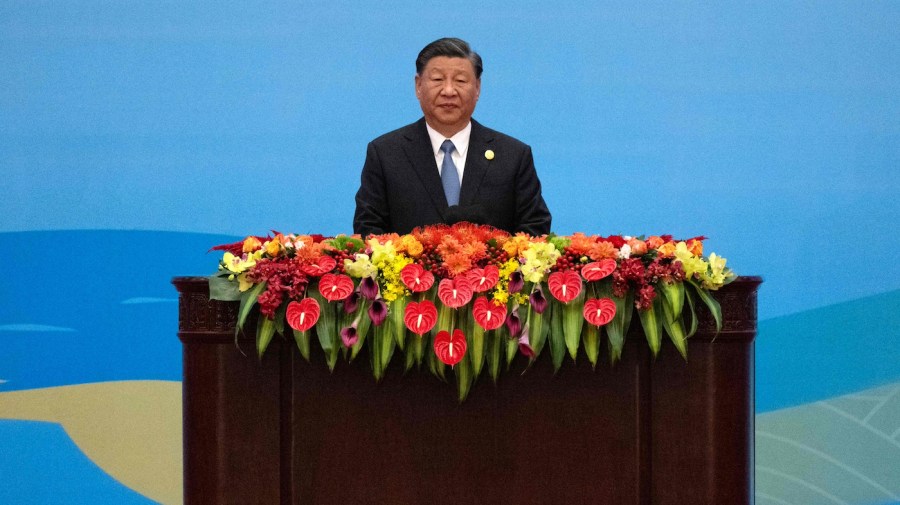The rise of China is one of the most significant geopolitical developments of our time, with China’s growing economic and military power reshaping the global order and challenging American hegemony. In response, some have advocated for a return to a similar to the one used against the Soviet Union during the Cold War. But containment is not a viable option in a multi-aligned world.
“Prudent balancing” is the best strategic approach available to the United States in this new world order. Multi-alignment is a new geopolitical paradigm in which countries are not aligned with any one superpower. Instead, they pursue their own interests and values, even if this means balancing between the U.
S. and China. There are a number of factors that have contributed to the rise of multi-alignment.
One is the growing economic power of emerging countries, such as India, Brazil and Indonesia. These countries are no longer dependent on the United States for economic development and are also reluctant to get caught in a new Cold War between the U. S.
and China. Another factor is the decline of American hegemony. The U.
S. is no longer the sole superpower. China is rapidly closing the gap, and other countries, such as Russia, are also becoming more assertive.
This has given countries more flexibility to pursue their own interests without fear of American retaliation. Multi-alignment presents both challenges and opportunities for the United States. One challenge is that it makes it more difficult to build coalitions and achieve consensus on international issues.
In a multi-aligned world, countries are more likely to pursue their own interests, even if this means disagreeing with America. Another challenge is that multi-alignment increases the risk of conflict. In a world where countries are not aligned with any one superpower, there is a greater risk of miscalculation and escalation.
However, multi-alignment also presents opportunities for the United States. For example, it allows the U. S.
to build relationships with a wider range of countries, which can help to reduce tensions and promote peace and stability. Additionally, multi-alignment can create new opportunities for economic cooperation. Prudent balancing is the best strategic approach for the United States in a multi-aligned world.
It involves a combination of competition, cooperation and deterrence. The United States must compete with China in areas where it has a comparative advantage, such as technology and innovation, which will maintain American competitiveness and prevent China from dominating the global economy. The U.
S. must also deter China from unfair trade practices and other aggressive behavior. This can be done through economic tools, such as tariffs and sanctions, as well as through diplomatic and military means.
Despite the competition, the U. S. must also cooperate with China in areas of mutual interest, such as climate change and global economic growth, helping to build trust and reduce the risk of conflict.
It is important to note, however, that cooperation should not be seen as appeasement. The U. S.
must be willing to stand up to China when it violates international norms or threatens American interests. The United States must maintain a strong military presence in the Indo-Pacific region to deter China from aggression and reassure its allies — and must also strengthen its military alliances and partnerships in the region, such as with Japan, South Korea and Australia. This will create a balance of power in the region and make it more difficult for China to coerce other countries.
The rise of multi-alignment has a number of implications for U. S. foreign policy.
First, it requires the United States to be more flexible and adaptable in its approach to international relations. In a multi-aligned world, countries are more likely to pursue their own interests, even if this means disagreeing with America. This means that the U.
S. must be willing to work with a wider range of countries and to build coalitions on an issue-by-issue basis. Second, multi-alignment requires the United States to invest in its soft power — the ability to influence others through persuasion and attraction, rather than through coercion or force.
The U. S. has a long history of using soft power to promote its interests around the world, and this will be even more important in a multi-aligned world.
America can invest in its soft power by strengthening its cultural and educational ties with other countries, by promoting democracy and human rights, and by providing foreign aid. Prudent balancing is the best strategic approach for the United States in a multi-aligned world. It is a complex and challenging task, but it is the only one that offers the prospect of managing China’s rise in a way that is consistent with American interests and values.
.
From: thehill
URL: https://thehill.com/opinion/international/4309184-why-prudent-balancing-is-americas-best-china-strategy/



